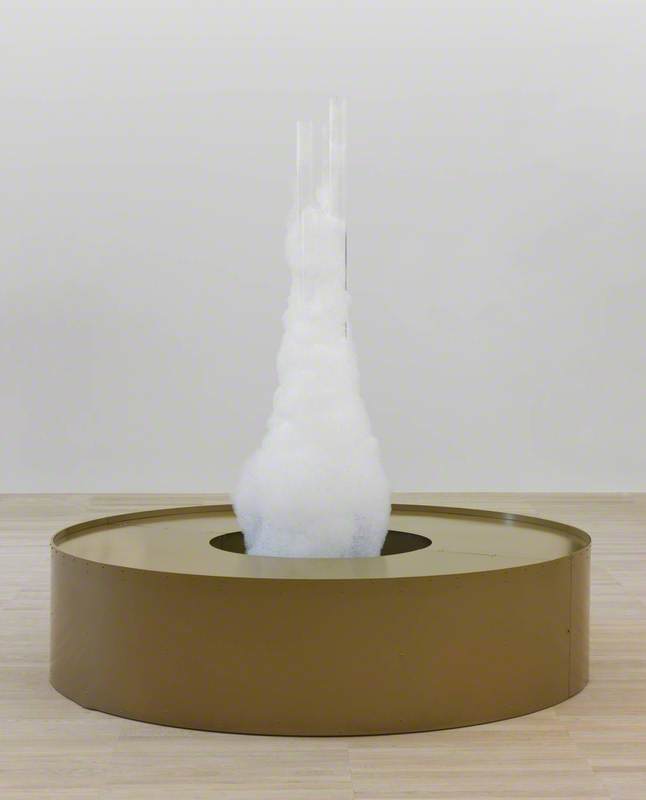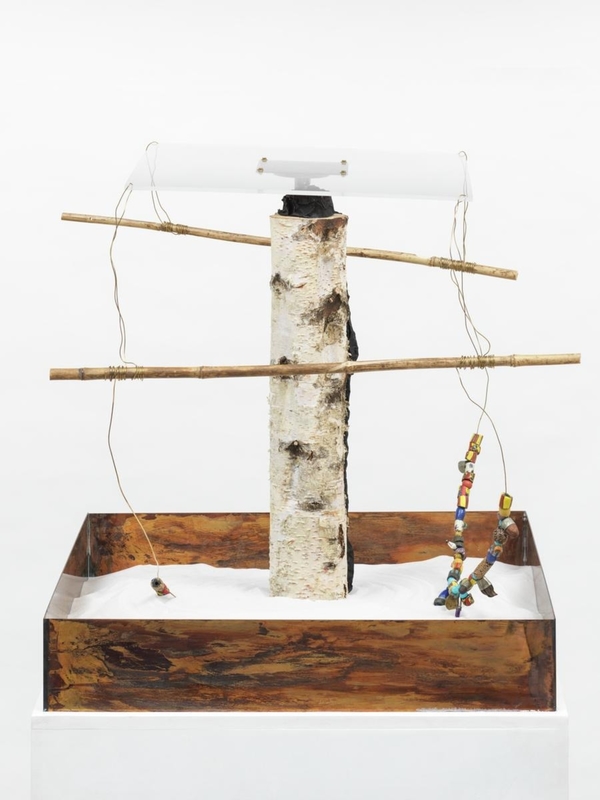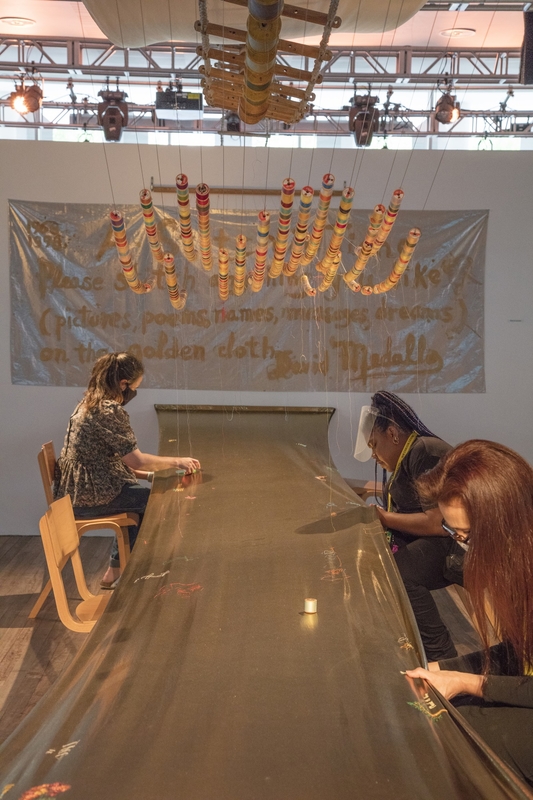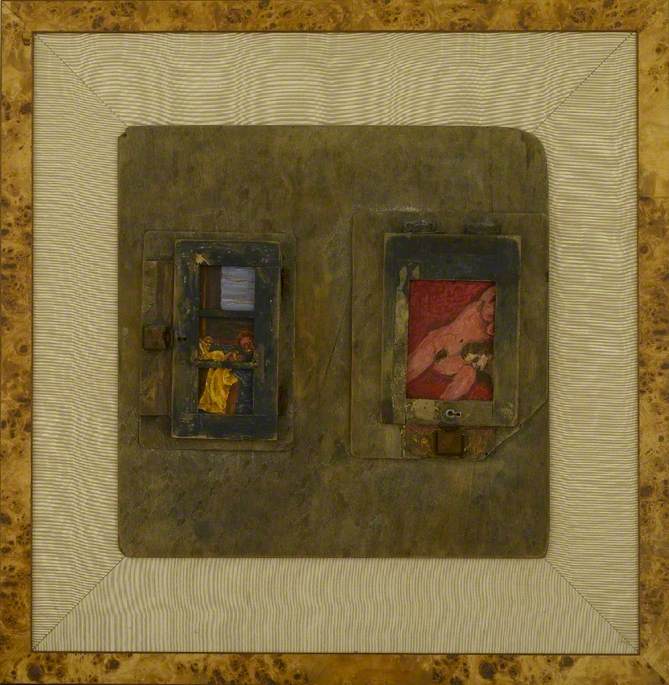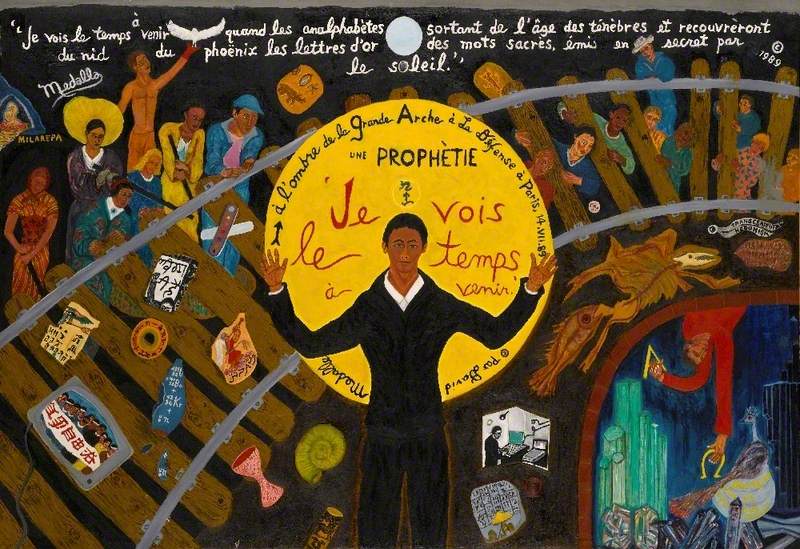Born in the Philippines in 1938, multimedia artist David Medalla arrived in London in 1960. Though he spent much of the next sixty years in Britain, he saw himself as a global citizen, with spells in Paris and Manila. His early works anticipate developments in kinetic or 'moving' sculpture, land and performance art, among others. This Curation examines Medalla's practice through his work in British collections.
In 1964, Medalla co-founded Signals, a gallery and newsletter. At a time when the British art world was looking to the USA, Signals united experimental artists from Europe, Latin America and Asia with an interest in science, technology and global politics. It was here that Medalla realised the works for which he is now best known.
-
Cloud Canyons No. 3: An Ensemble of Bubble Machines (Auto Creative Sculptures) 1961
This work is one of many 'bubble machines' Medalla made from 1963 onwards. Soapy liquid is driven up Perspex tubes by compressors, erupting from the top in foamy forms of ever-changing shapes and sizes that cascade back down to the bottom. These floppy, bubbling protrusions are playful, captivating, even erotic. Medalla was interested in how sculpture might capture contemporary scientific discoveries and concepts from Buddhism and philosophy alike, from the transformations of imperceptible particles of matter to the transitory nature of all things.
David Medalla (1942–2020)
Metal, acrylic plastic, 2 compressors, 2 timers, water & soap
Tate
-
Sand Machine Bahag – Hari Trance #1 1963–2015
In Sand Machine, colourful beads hanging from rotating bamboo canes trace endless furrows into sand. For Medalla, the work imagines a future when solar-powered technology can 'help irrigate the world's deserts'. Deeply aware of the uses and effects of science and industrialisation, particularly for indigenous communities in the Global South, Medalla sought to imagine how technology might help us be in good relation with each other and our environment.
This sculpture is another of Medalla's many 'cosmic propulsions', which he dreamt would expand what sculpture could be or do. Often unrealised, these included smoke and mud machines, rooms planted with millions of edible mushrooms, and sound pieces produced by the movements of snails.
David Medalla (1942–2020)
Wood, brass, sand, bamboo, acrylic sheet, glass beads & other materials
H 68.5 x W 60 x D 60 cm
Tate
-
Participation and politics
Much of Medalla's early work involved the spectator – inviting them to shape the foam of the bubble machines, for example – and sought to open up art to wider audiences. Yet it wasn’t until later in the 1960s that Medalla began to produce participatory installations and performances in earnest. Important to this shift were Medalla's experiences as part of Exploding Galaxy (1967–1968), a countercultural performance group in London, and a 1969 trip to the Philippines, where Medalla opposed the dictator Ferdinand Marcos. Subsequently, Medalla engaged more explicitly with socialist and communist politics, founding the Artists' Liberation Front (1971) and then Artists for Democracy (1974) with John Dugger, Cecilia Vicuña and Guy Brett.
-
A Stitch in Time 1968–1972
A Stitch in Time invites its audience to stitch words, objects, and mementos to a large hanging cloth. Medalla has said that the work was inspired by his giving handkerchiefs to his lovers on their journeys across the globe, embroidered with his name and a short message. Each iteration of the work is uniquely produced by its participants, who dedicate a moment of creative focus to contribute to the work's form. It shares with many of Medalla's other participatory works an invitation for its participants to discover their capacity as artists.
David Medalla (1942–2020)
Cotton, wood, steel & hemp
Arts Council Collection, Southbank Centre
-
Synoptic realism
Many of Medalla's works from the 1970s and 1980s were performances. Ephemera from these works cannot yet be found in large public collections but in smaller archives and collections. Indeed, despite its innovations and art-historical significance, Medalla's work was largely ignored by the British art establishment until relatively recently. Medalla did not aspire to be included – but he did put his marginalisation down to the dynamics of race and class.
The first of his works to enter British public collections were paintings from the late 1970s and 1980s. Medalla used the term 'synoptic realism' to describe his work at this time. This body of work incorporated social commentary with subjective sensations, dreams, desires and memories.
-
Rhapsody of the Dagger and Ammonia Boy (Interior Scene) 1979
This painting is part of a series showing the escapades of a puckish and violent character, the eponymous boy. Looking through the wooden frames, the viewer becomes a voyeur. To the left, the boy appears to be wrangling with another (female?) figure; to the right, the boy's head rests on the thigh of a nude female body. There is ambiguity to these scenes in the play between desire and danger, in the contrast between the delicate, colourful miniature paintings and the violence they seem to depict. In the context of economic crisis and social fracture in Britain, Medalla claimed that with this series he wanted the social and cultural conditions that produced 'English boys' – their 'speech, body language … sexual fantasies, [and] rituals'.
David Medalla (1942–2020)
Acrylic on wood
H 66.5 x W 65.2 cm
Arts Council Collection, Southbank Centre
-
A Prophecy 1989
In this painting, the artist's dreams and desires take centre stage. In the middle of the work, Medalla stands, arms outstretched, saying, 'I see the time that will come'. Behind him, people from across the world overturn a railway track, based on a photograph of Chinese workers upending a track used by Japanese invaders in WW2. Fossils, archaeological fragments and different scripts are scattered around the painting, encompassing past and future and revolutionary moments across the world. The work is based on Medalla's interactions with migrant labourers in Paris on Bastille Day. It captures his vision for a future of communication, solidarity and liberation for workers globally.
David Medalla (1942–2020)
Oil on canvas
H 210 x W 310 cm
Arts Council Collection, Southbank Centre
-
Over his long career, Medalla not only produced sculpture, drawings, poems, paintings and performances. He also worked to awaken and enliven others' capacity for artistic expression and helped to create alternative spaces for artists to flourish, from Signals and the Exploding Galaxy to Artists for Democracy and the London Biennale (2000–2020). He is fondly remembered by many artists, curators and other art-workers – for his curious, joyful and mischievous character as well as his innovative and expansive approaches to art.
-
Further reading
Eva Bentcheva, 'Distinguishing Artistic Mobility from Diaspora through Philippine Art History', in Patrick Flores and Loredana Pazzini-Paracciani (eds), Interlaced Journeys: Diaspora and the Contemporary in Southeast Asian Art, Hong Kong: Osage Publications, 2020, pp.29–46
Guy Brett, Exploding Galaxies: The Art of David Medalla, London: Kala Press, 1995
David Medalla, 'Conversation with David Medalla', interview by Rasheed Araeen, Black Phoenix 3, 1979, pp.10–19
David Medalla, Signalz: Newsbulletin of the Centre for Advanced Creative Study 1:1, August 1964
Chanon Kenji Praepipatmongkol, 'David Medalla: Dreams of Sculpture', Oxford Art Journal 43:3, 2020, pp.339–359
